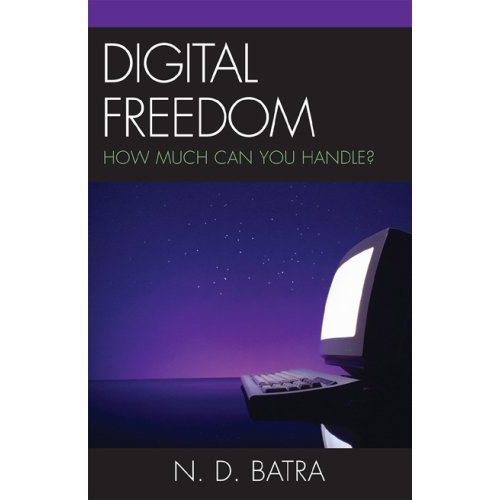Diversity matters
From The Statesman
ND BATRA
This is an age of smart ideas. Ideas are potential assets.
Creativity matters and sets a nation apart. There’s a new frenzy for reaching customers through newer modes of communications, including product placement in television programmes.
The busiest shopping season in the USA has always been Thanksgiving through Christmas, but for businesses it is too risky to depend solely upon the holiday season for profitability, market share or even survival. Which has led advertising and marketing agencies to find creative ways of persuading buyers to open their wallets. A decline of even 1 per cent in holiday sales ripples through every trailer park and leaves many people shivering in the cold. So shoppers are being offered unprecedented discounts on sales of all kinds of goods from cars to carpets to offset a bad holiday season, if it were to occur.
Even the pharmaceutical industry, especially the prescription drug industry, has entered into the game of direct marketing. Any idea that brings the shopper to the mall and seduces her to fill up the shopping cart is an invaluable asset. The USA desperately seeks ideas that can make things happen, whether it is to catch Al-Qaida operatives; or to persuade the shopper to take out the credit card and spend whether she has the money or not in the bank.
But how do you turn an idea into an innovation and bring it to the marketplace? “I am your idea”, said an Accenture blurb sometime ago.“One day you’ll look for me and I’ll be gone.” Ideas are ephemeral unless you grab them and make them do something. Make ideas work by sharing with people who know how to turn them into innovations and tangible goods.
Occasionally in social gatherings, someone would buttonhole me and say: India has some of the world’s brightest economists, why can’t their ideas be turned into something that would speed up economic growth in India? At such moments I nod in wonderment.
India is full of bright minds, indeed! And they would be returning to India especially with the introduction of dual citizenship, a brilliant idea that would generate unprecedented opportunities for investment in India. Besides, every time there is some discussion about India’s economic growth, naturally China’s sustained economic growth of 8-10 per cent during the last two decades comes up for comparison. Two decades ago both the countries were struggling at the same level of poverty.
But one day the Chinese paramount leader Deng Xiaoping had a revelation: Capitalism is good, he mumbled after returning from a visit to the USA. Make money, not revolution. And the floodgates of entrepreneurial spirit opened up in China, even without political freedom.
Keith Bradsher of The New York Times wrote sometime ago that China, “by quickly converting much of its economy to an unfettered and even rapacious version of capitalism, has surged far ahead…. China has high-speed freeways, modern airports and highly efficient ports that are helping it dominate a growing number of manufacturing industries.”
In a matter of years, China has become a manufacturing hub of the world, sucking most foreign direct investments. It looks like all ships are sailing to and fro from China. China’s miracle is not based on any grandiose economic theory, but on a few simple ideas: Excellent law and order conditions; good transportation and communications facilities; and the courage to let the people make money. But this column is about ideas, how to take them from one field and make them work in another, for example, from the battlefield to the marketplace. Americans are good at this; for example, American advertisers are using Jean Piaget’s theory of child development, sensory experiences and visual stimulation to sell EZ Squirt Ketchup to grownups. Said Alissa Quart in Wired, “Piaget is only the beginning. Just as the pharmaceutical industry steers medical research, marketing and advertising are beginning to guide the way scholars investigate brain functions, perception, and language.”
Consider, for example, cognitive science, a multidisciplinary area that includes psychology, neuroscience, sociology, and computer science. At the highest level, it is associated with the study of artificial intelligence and autonomous systems, but at the market level its ideas are being increasingly used to study “the psychology of acquisition and the science of material desire”, for better marketing and placement of products, anything from toys and cereals to jeans. What’s wrong with that? Ask some professors who make a lot of money in consultations. Many of us do have qualms about turning the academia into a handmaid of the marketplace but in the USA various fields of intellectual endeavour are not sealed shut from each other. Ideas flow from one field to another and flourish wherever they find the best applications, whether it is the shopping cart or fighting terrorism.
It is all about the psychology of desire that transforms an idea into an asset; turns driving a car into love and adventure; turns zeros and ones into an outsourcing industry. In the ultimate analysis, it is all about creativity, the third pillar of New Economics, the perpetual cycle of growth; the other two being venture capitalism that dares to turn the untried into wealth; and infrastructure that includes security and the rule of law.
Tuesday, July 05, 2005
CREATIVITY AND DIVERSITY
at Tuesday, July 05, 2005 Posted by Narain D. Batra
Subscribe to:
Post Comments (Atom)

No comments:
Post a Comment